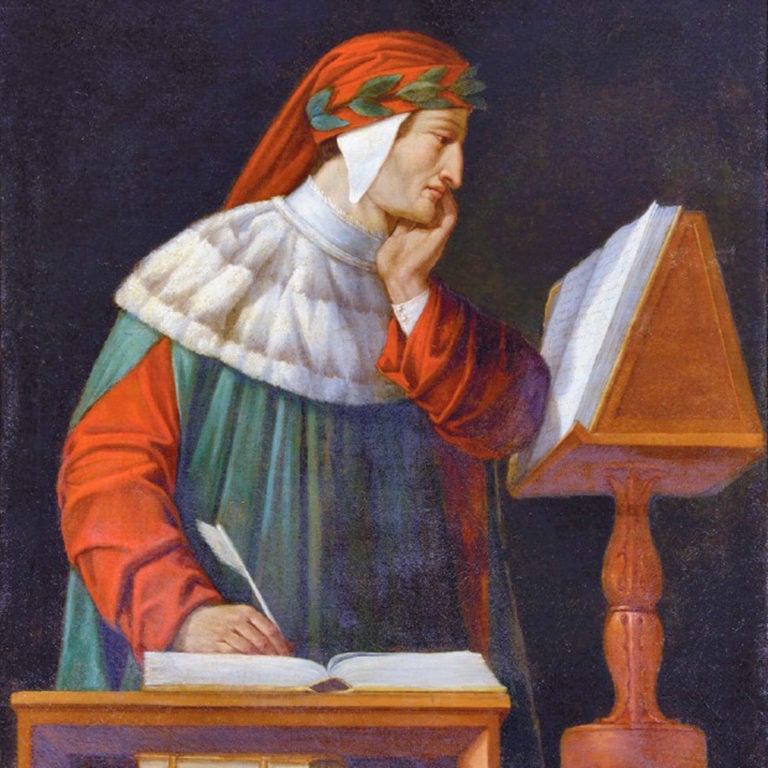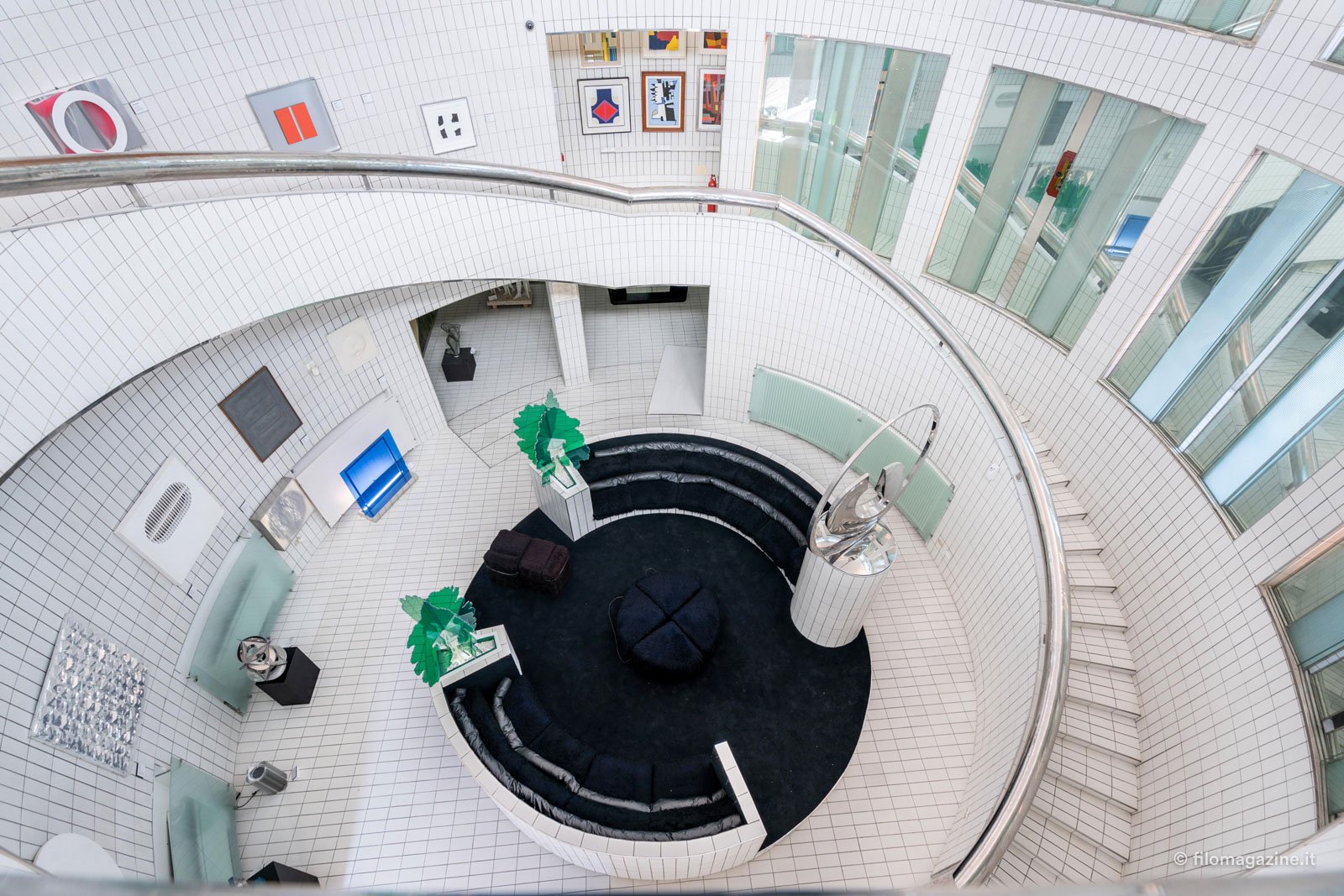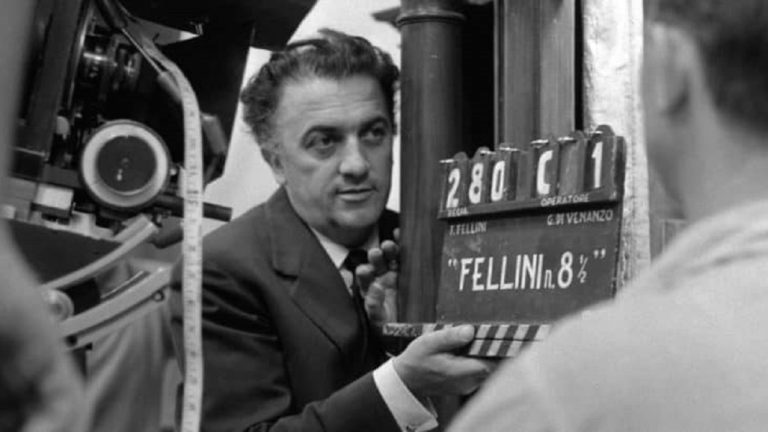Perhaps not everyone knows that the Maestro Leonardo da Vinci, invited by Cesare Borgia in Romagna, made a fascinating journey among fortresses, ports, squares, and architectures.
Let’s retrace his journey, touching those places that he admired and of which traces are found in his notebooks, such as the “Codice L” (conserved in original at the Institut de France in Paris and in reproduction at the Maritime Museum of Cesenatico).
But first of all, let us give some context: it’s 1502 and Cesare Borgia has just conquered the Duchy of Romagna, with the support of Pope Alexander VI and the King of France Louis XII.
The neo-Duca calls Leonardo da Vinci, whom he had already known and appreciated in Milan, and entrusts him with the task of verifying the fortifications and strategic infrastructures of the territory he was dominating, and planning any necessary improvements. Leonardo gets en route and, with the charge of “Architecto et Ingegnero Generale”, goes from Pesaro and Urbino to Rimini, arriving on August 8th 1502.
Rimini
Starting from Rimini, let’s sit on the edge of Fontana della Pigna (once in Piazza dell’Arengo, today in Piazza Cavour) to observe the water just like Leonardo did, which described the fountain’s harmonious effect in his secret notes:
“Fassi un’armonia colle diverse cadute d’acqua, come vedesti alla fonte di Rimini, come vedesti addì 8 d’agosto 1502”.
A verse that leads us back in time, when the fountain was to become, as can be seen from Leonardo’s drawings, a futuristic device that would have used water not as a pump, but by making the water sound, while falling into vases of different shapes.
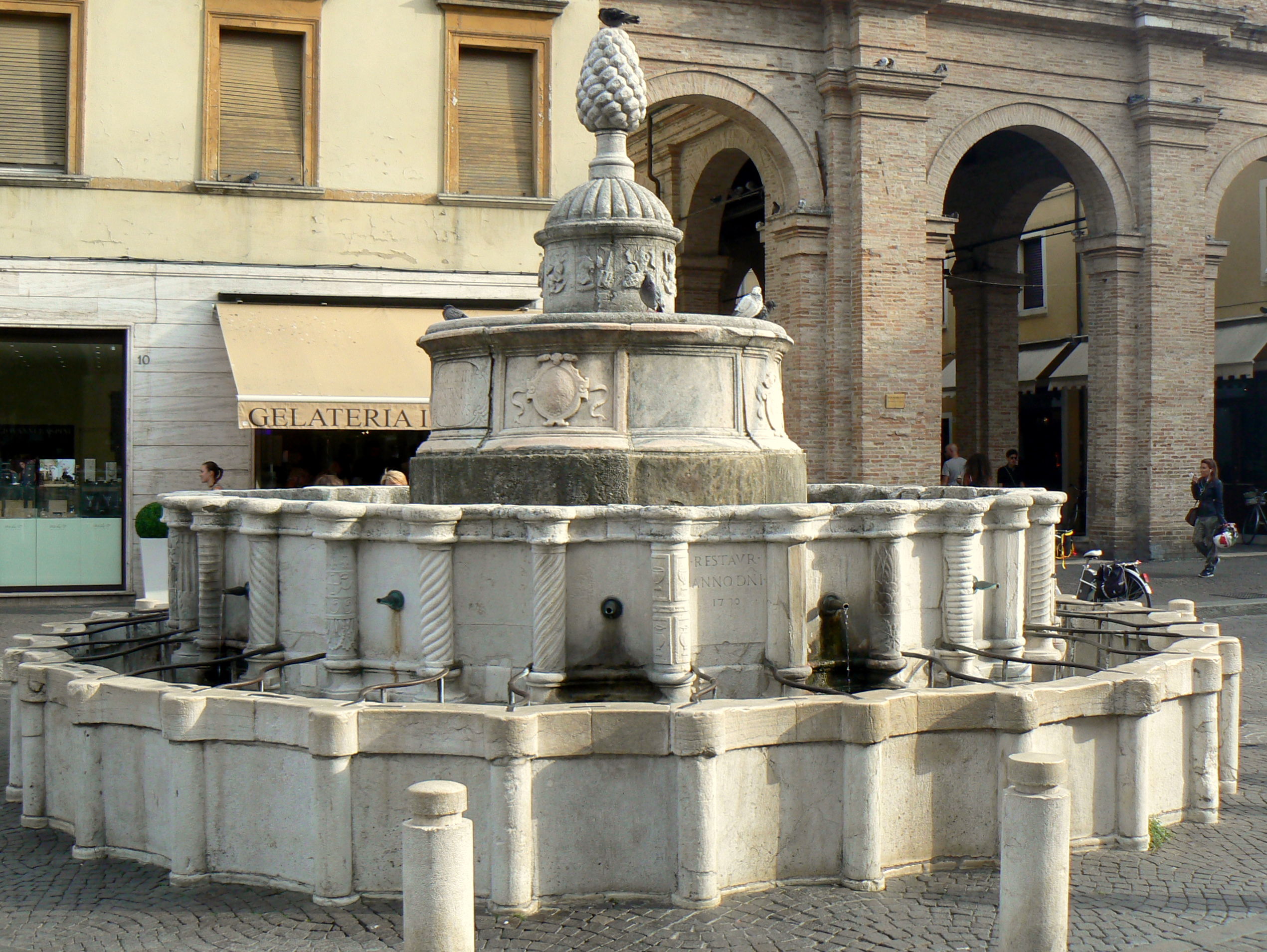
Rimini, Fontana della Pigna, Ph. paperoastro
Cesena
From Rimini we reach the nearby Cesena, where Leonardo arrived for the San Lorenzo celebration.
Here the Rocca of the city, today called Rocca Malatestiana, located on the top of the Garampo Hill, is the place to visit in the footsteps of the Maestro.
Cesena is the city that Cesare Borgia wanted to enlarge and embellish to make it the seat of his court. In what is today the magnificent Piazza del Popolo, Leonardo made reliefs of the walls and the fortifications.
The massive curtain wall of the southern front of the Rocca Nuova was changed in 1503 with the creation of walls called “alla franzoza” to face the new siege techniques, block the increasingly devastating blows of heavy firearms and have direct control of the territory.
This ingenious defense system, still preserved on the walls of the Rocca, was probably approved by Leonardo da Vinci. It’s interesting to note how the shape assumed by the artillery loopholes is the same as Leonardo’s drawings.
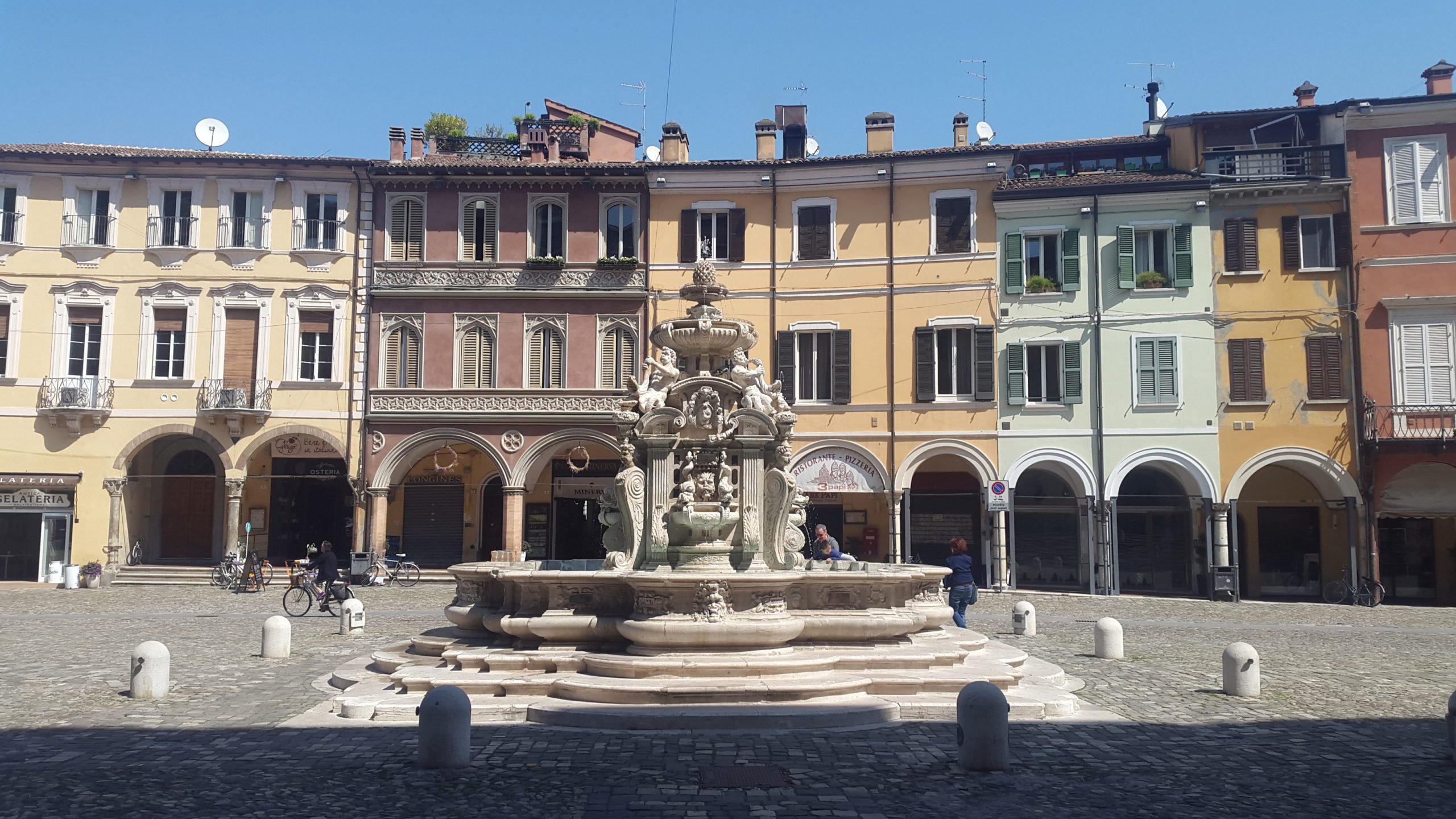
Cesena, Fontana Masini in Piazza del Popolo, Ph. maria_bernadette_melis
Cesenatico
At the beginning of September Leonardo reached Cesenatico.
The entrance of the fourteenth-century Canal Port risked to be buried and the Maestro made the relief and a bird’s eye drawing of it, taking the view from the top of the lighthouse to better see the structure and suggest improvements to the pre-existing landing.
He modified the orientation and the length of the single palisades and widened the connected basins, so that the sea water could enter and accumulate, blocked by mobile bulkheads, and then flow quickly during the low tides and, with the outflow, keep the entrance free.
The project remained just on paper, but the Leonardo’s Canal Port of Cesenatico is today one of the most important monuments of the city and a walk along the canal allows you to fully enjoy the architectural beauty and warm atmosphere of this seaside town.
Don’t miss the visit of the Floating Maritime Museum, with the old fishing boats of the Upper Adriatic moored with the ancient sails decorated with natural soils and with the symbols of the fishermen’s families, and the section on the ground of the Museum, of 3000 sq.m. dedicated to traditional boats, that – as said at the beginning – preserves the reproduction of the famous “Codice L” of Leonardo.
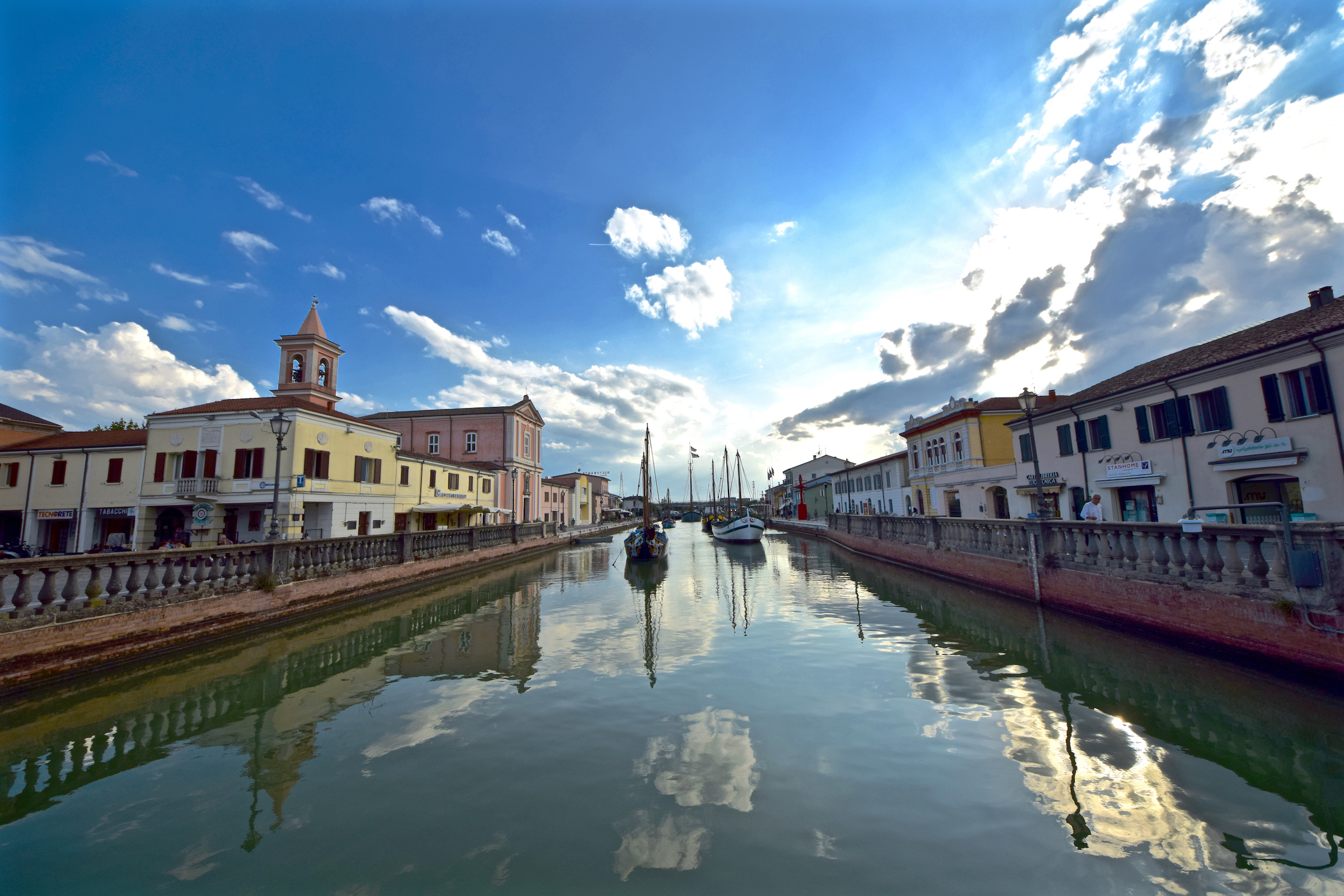
Cesenatico, Floating Maritime Museum on the Canal Port, Ph letizia_carabini
Faenza
Leonardo resumed his journey toward Faenza, where his passage is testified by the drawing he made about the Cathedral in Piazza della Libertà, whose majesty fascinated Da Vinci so much that he remembered it on his travel notebooks.
In Leonardo’s drawings, we can see unequivocal anomalies respect to the Faenza’s Cathedral: the Basilica building has no polygonal apse, which would date the construction of the current apse not before 1502, a doubt that may never be totally dissipated, but that becomes a starting point to admire the beauty of this magnificent Basilica.
You can’t leave Faenza without having visited its historic ceramic workshops, an art that enchanted also Leonardo. He talked about Faenza’s ceramic handicraft in its Hammer code.
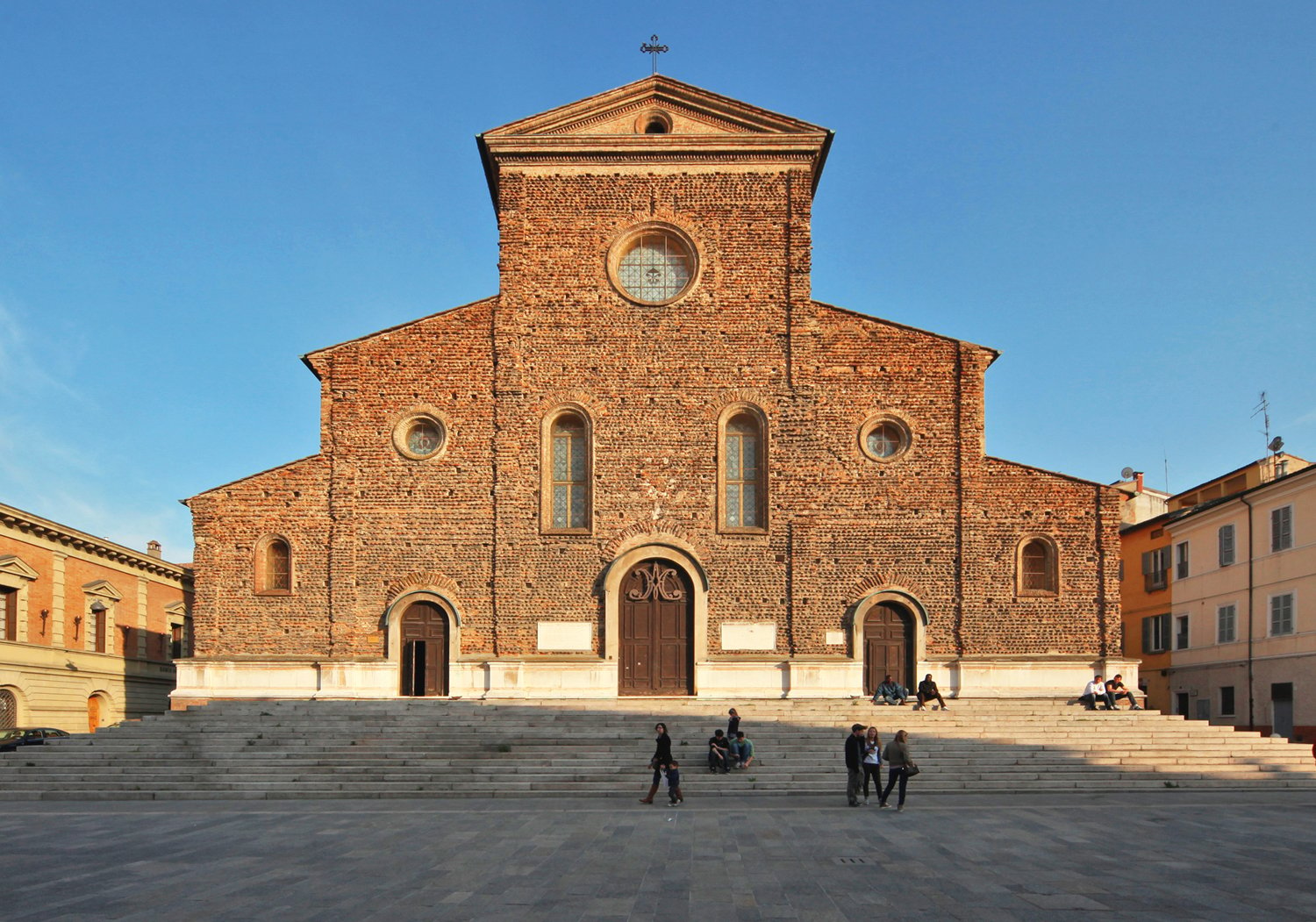
Faenza’s Cathedral
Imola
Leonardo’s longest stay, however, was in Imola, where he stayed until December.
Imola in that autumn atmosphere of 1502 was a real military camp, where Cesare Borgia gathered thousand of weapons and men.
In the clamor and excitement of this parade ground, Leonardo walked with his helpers through the streets and the neighborhoods, drawing walls and devices. Among the most precious fruits of his stay in Imola is the city plan, now kept in the Royal Library of the English Castle of Windsor.
Walking through the streets of the historic center of Imola, retracing the same streets of Leonardo, looking at the squares, buildings and walls, is a timeless experience.
Leonardo imagined these streets inscribed in a circle divided by eight rays bearing the names of the winds and, in the lower part of the map, in a sort of natural counterpoint to the geometric division of spaces by man, he designed the flow of the Santerno river with wide blue lugs.
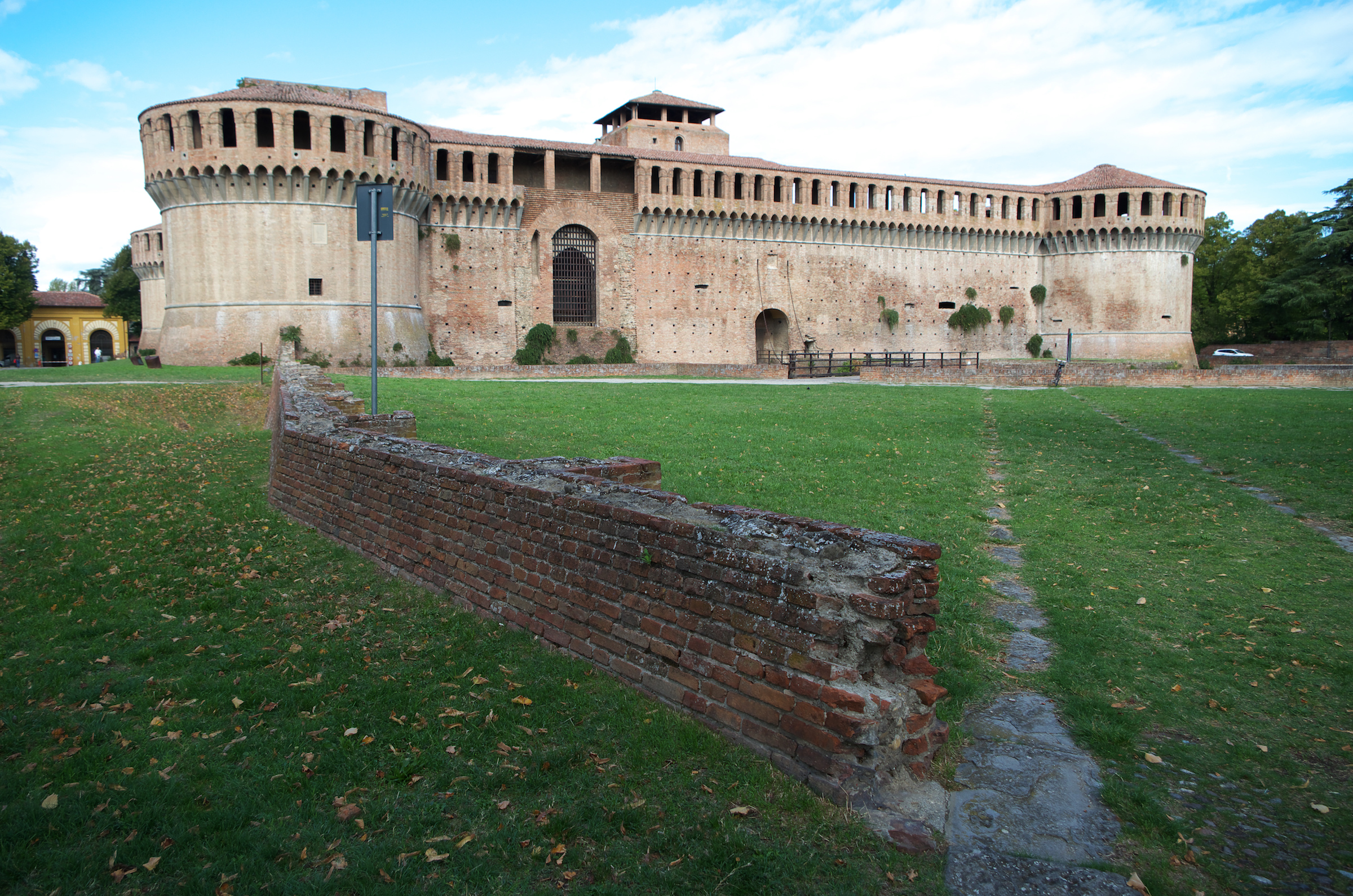
Imola, Fortress, Ph lupo1959
Our itinerary ends in the natural environment of Santerno, the river that connects Romagna to Tuscany, the homeland of Leonardo: a river that offers suggestive scenery and embankments that seem shaped for bathers, including natural pools, waterfalls, white and smooth rocks perfect as solarium.
To discover more: "Leonardo Da Vinci and Romagna" Museum
Dedicated to the “Romagna period” of Leonardo da Vinci, this small museum in Sogliano al Rubicone aims to illustrate the characteristics of the territory and its traditions through the observations and analysis of this extraordinary man of talent.
The Museum is divided into two sections: a scientific one and an ethnographic one.
The first one documents, through the exhibition of anastatic copies of manuscripts, studies, drawings, and notes, the analysis about aspects of physics, mechanics, and hydraulics, carried out by Leonardo during his stay in Romagna.
The second presents studies on the customs and traditions of the 16th century, with particular reference to the theme of water, sound, and nature. Here we report the presence of models and images of the “concavities” made in the San Donato park.
What if the Gioconda was born in Bologna?
It is 1515 when Leonardo returns in Emilia Romagna, this second time following Francesco I King of France for a meeting with Pope Leone X, guest in the fifteenth century Palazzo Felicini in via Galliera, in the historic city centre.
Impossible not to be enchanted by the architecture of the building, which, with its façade marked by a portico with nine arches and ogival windows, is one of the most beautiful buildings in Bologna, still preserved almost entirely in its early Renaissance architecture.
It is said that right here Leonardo began to paint the Monna Lisa inspired by Filiberta di Savoia, despite all the most accredited historical reconstructions.
What we know is that the landscape behind the Monna Lisa is the Montefeltro, at the time the northernmost strip of land of the Urbino Duchy, on the border between Tuscany and Romagna.
Two researchers “landscapes’ hunters” have indeed realized that, recreating the background of the work, you get the entire cartographic map seen from above, with a bird’s eye view, from the heights and valleys of Valmarecchia.
The Leonardo's works in Emilia Romagna
At the National Gallery of Parma a Head of a Girl, called La Scapiliata, attributable to the first decade of the sixteenth century, is a painting in oil on wood created by Leonardo da Vinci and considered incomplete.
We know very little about the work, except that it was first mentioned in an inventory of Casa Gonzaga of 1627 as “a painting depicting the head of a disheveled woman, drafted, work of Leonardo da Vinci”.
The image, beautiful, recalls Leonardo’s studies on the motions of the soul at the base of his studies.
A manuscript with a man inscribed in a structure identical to the one drawn by Leonardo is preserved at the Ariostea Library of Ferrara: it is the Vitruvian Man by Giacomo Andrea da Ferrara, whose digital copy can be seen.
Giacomo Andrea da Ferrara was a friend of Leonardo, an expert on the work of Vitruvio De Architectura, and he met the master between 1490 and 1498. During these years, the two would have discuss together on how to translate the concept of the ideal man into an image, the microcosm, inscribed both in a circle (symbol of the divine) and in a square (symbol of the secular world). Leonardo therefore did not conceived the famous design by himself, but along with his Emilia-Romagna’s friend.
Author
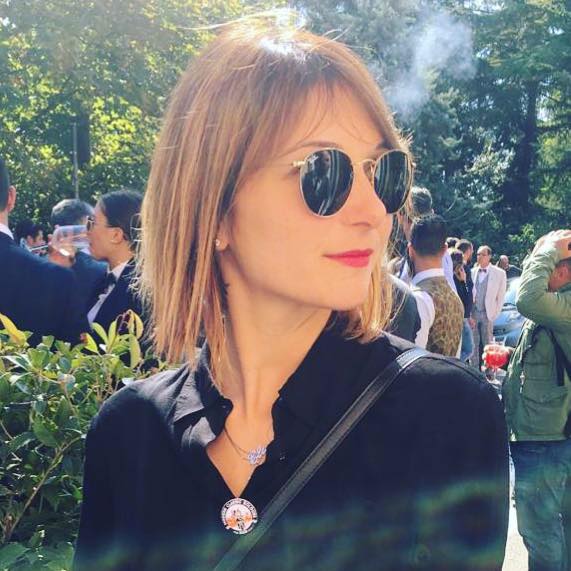
Elisa Mazzini
Social Media Manager for @inEmiliaRomagna and full-time mom.
You may also like
The Houses of Illustrious Personalities in Romagna
by Davide Marino /// July 6, 2018

Interested in our newsletter?
Every first of the month, an email (in Italian) with selected contents and upcoming events.
